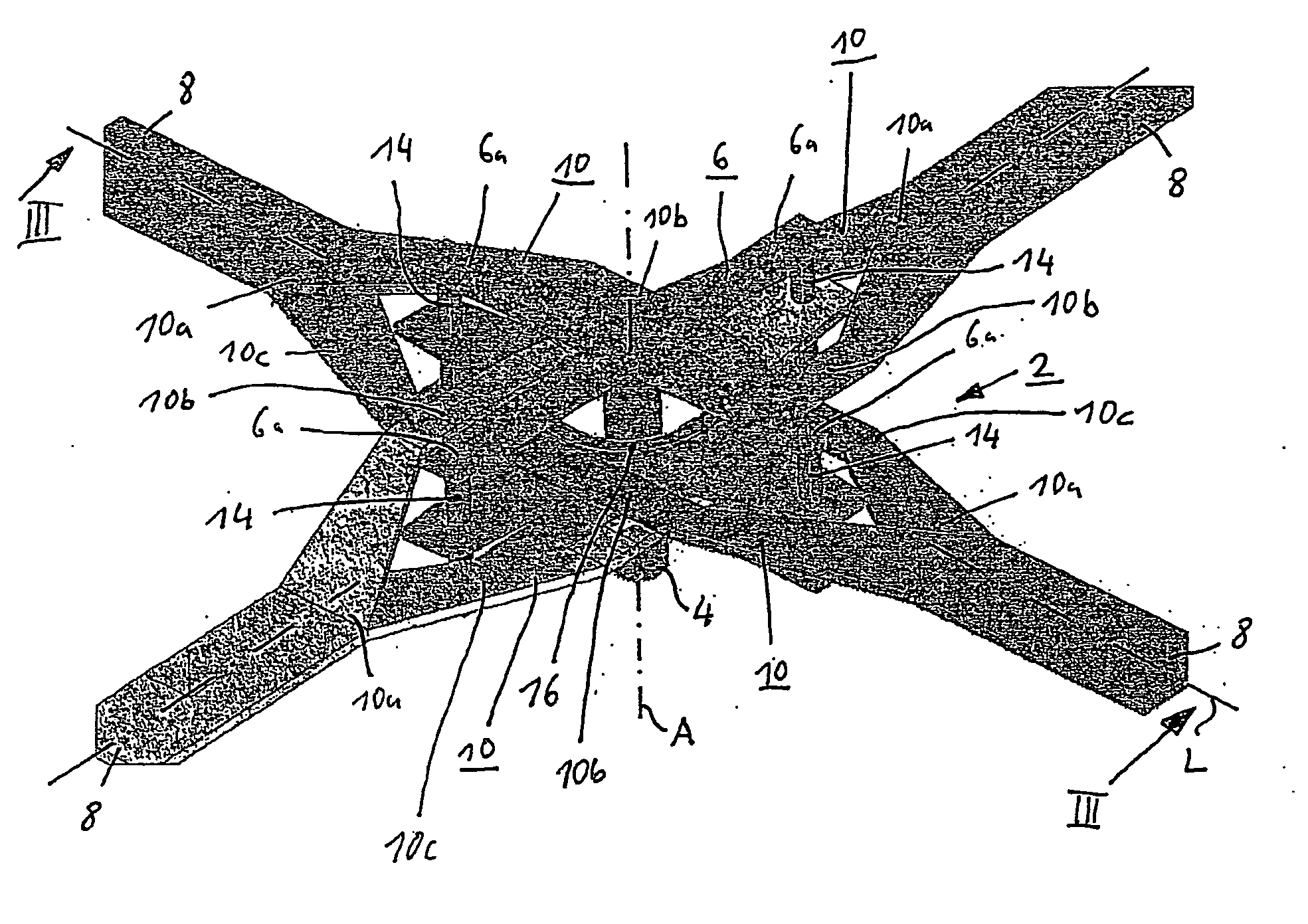Non-articulated rotor and rotorcraft comprising a rotor of this type
a non-articulation rotor and rotorcraft technology, which is applied in the direction of marine propulsion, liquid fuel engines, and vessel construction, etc., can solve the problems of reducing the service life reducing the durability and mechanical properties of the rotor blade, and reducing the flapping hinge distance or reducing it below a specific value. , to achieve the effect of small fictitious or virtual flapping hinge distance, improved aerodynamic and mechanical properties, and improved mechanical properties
- Summary
- Abstract
- Description
- Claims
- Application Information
AI Technical Summary
Benefits of technology
Problems solved by technology
Method used
Image
Examples
first embodiment
[0029]FIG. 1 is a schematic, greatly simplified perspective depiction of a hingeless rotor according to the present invention, in accordance with a FIG. 2 is a schematic, greatly simplified perspective depiction of an individual rotor-blade attachment of the rotor of FIG. 1. The hingeless rotor according to the present invention, which is here configured simultaneously as a bearingless rotor, encompasses a rotor head 2, a rotor mast 4 having a rotor axis A, and a torque-transmission element 6 nonrotatably joined to rotor mast 4, that element being configured in this example as a cross-shaped rotor-head star 6 having four arms 6a. The rotor is further equipped with four similar rotor blades 8, each of which has a respective arm 6a associated with it.
[0030] For each rotor blade 8, the rotor encompasses a rotor-head-side rotor-blade connector having a centrifugal-force-discharging blade connector loop 10 which encircles rotor mast 4 in unattached fashion and is nonrotatably joined to ...
second embodiment
[0045]FIG. 4 is a schematic, greatly simplified perspective depiction of a rotor according to the present invention in accordance with a This version largely corresponds to that of FIGS. 1 to 3. In contrast thereto, however, blade connector loops 10 do not possess a joining tab, and rotor-head star 6 is disposed at an offset of approx. 45 degrees as compared with FIG. 1. Blade connector loops 10 are joined at an overlap region of their respective loop segments, by way of a respective bolt 14 or another suitable joining means, both nonrotatably to rotor-head star 6 and to one another. Two joining points thus result for each loop 10.
[0046] The rotor according to the present invention is used in a rotorcraft, in particular in a helicopter or a tiltrotor helicopter. A rotorcraft of this kind can have one or more rotors according to the present invention, depending on the configuration.
[0047] The invention is not limited to the exemplifying embodiments above, which serve merely for gen...
PUM
 Login to View More
Login to View More Abstract
Description
Claims
Application Information
 Login to View More
Login to View More - R&D
- Intellectual Property
- Life Sciences
- Materials
- Tech Scout
- Unparalleled Data Quality
- Higher Quality Content
- 60% Fewer Hallucinations
Browse by: Latest US Patents, China's latest patents, Technical Efficacy Thesaurus, Application Domain, Technology Topic, Popular Technical Reports.
© 2025 PatSnap. All rights reserved.Legal|Privacy policy|Modern Slavery Act Transparency Statement|Sitemap|About US| Contact US: help@patsnap.com



